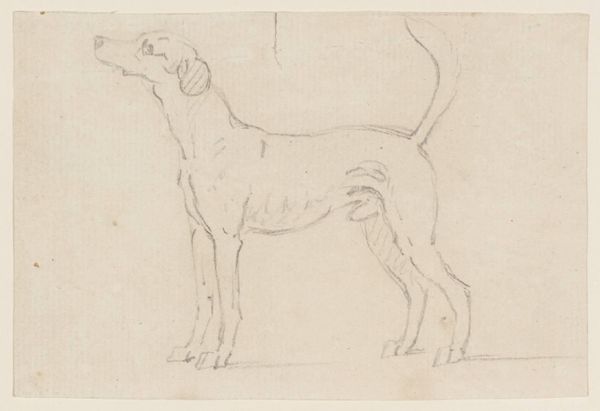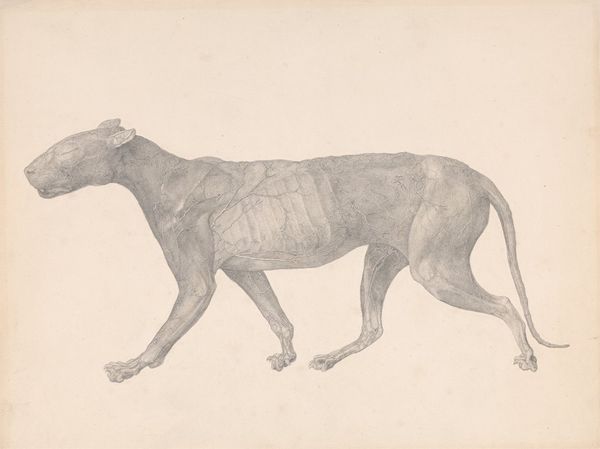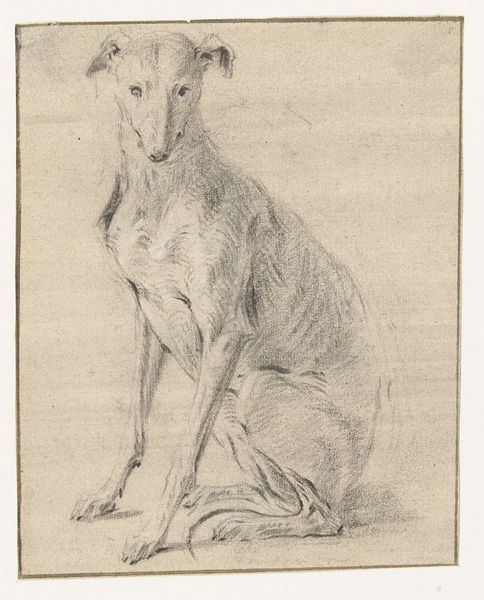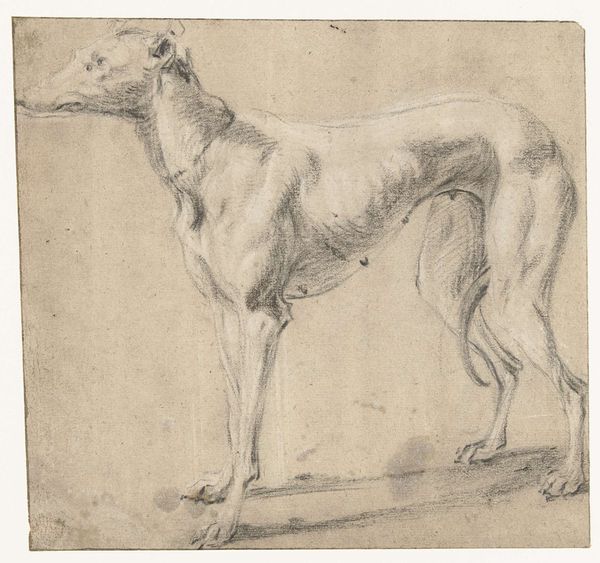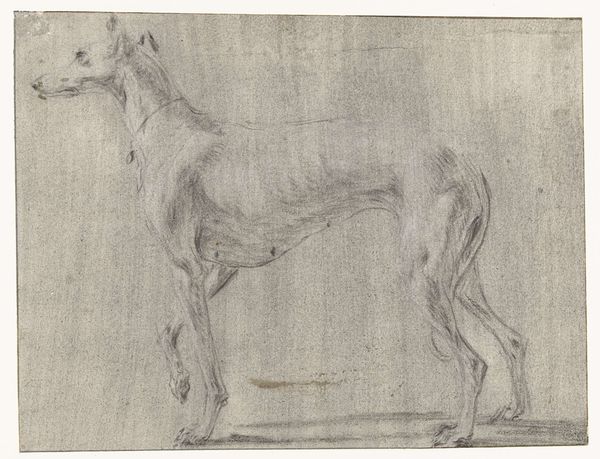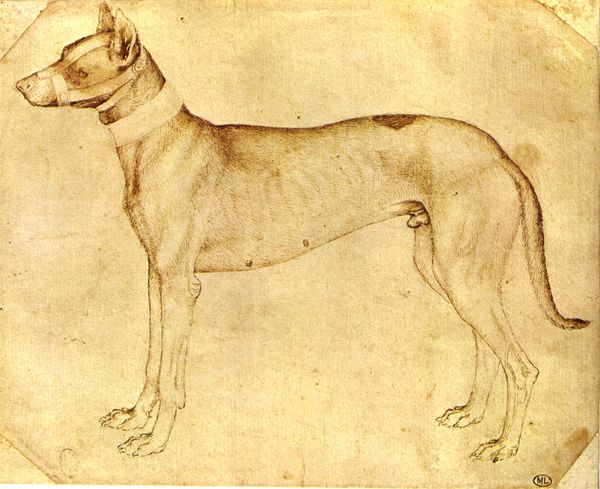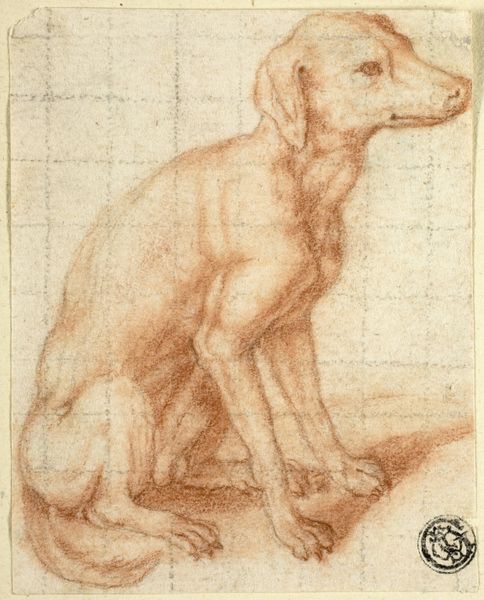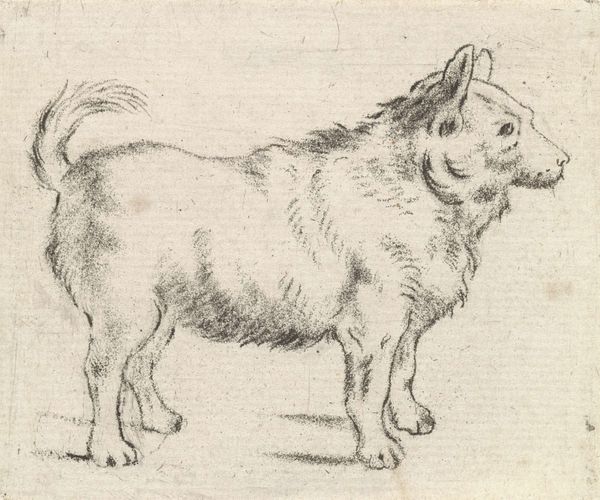
drawing, pencil
#
drawing
#
animal
#
pencil sketch
#
sketched
#
dog
#
11_renaissance
#
pencil
#
realism
Copyright: Public domain
Curator: Welcome. Today, we are examining "Greyhound," a pencil drawing executed around 1501 by Albrecht Dürer, an artist synonymous with the Northern Renaissance. It’s currently part of the Royal Collection housed at Buckingham Palace. Editor: I’m struck immediately by its apparent realism. The hound looks so lifelike. Yet there's also a melancholic air about it; perhaps it's the dog's thin frame, or the way it’s looking upwards, expectant. Curator: Dürer's technical skill is evident. We see delicate hatching and cross-hatching which skillfully defines the muscles, bone structure, and even the texture of the Greyhound’s fur. Think about the patronage system, it is more likely the artist did it to prove his skills in representing this beloved animal with photo-realistic precision for a noble client rather than as an attempt to capture and comment on its emotional life, even if, in doing so, a certain expression emerges, incidentally or deliberately. Editor: But the symbolism! Surely a greyhound represents more than mere domesticity in the 16th century? Given its association with hunting, nobility, and refined society, I cannot help but interpret it through a lens of social class. The upward gaze—could it not be a yearning, reflecting a dog’s subservient position relative to its owner? Or, in this specific piece, as we move from Medieval to Renaissance Era when the rise of courts as the pivotal sites of power in Europe has become decisive, the artist could simply be demonstrating how, as animals, people too, would gaze and depend on royal figures to prosper. Curator: It’s worth mentioning Dürer's position in shaping the perception of animals within the visual arts. Consider the historical context. Representations of animals had previously been more symbolic or allegorical; think Medieval bestiaries. Dürer sought to depict them as individuals with anatomically correct realism, even capturing a glimmer of their personality. Editor: Yes, but I see this individual portrait as part of broader political and social currents of the time, perhaps highlighting themes of dependency, hierarchy, or even courtly loyalty through the innocent gaze of a noble dog. This artwork prompts us to interrogate these representations. What power structures are normalized when even our beloved companions are positioned to symbolize service and class? Curator: Ultimately, Dürer’s "Greyhound" serves as a window into a transitional period in European art and culture—it marks a shift from symbolism to naturalism but, as you mentioned, opens conversations on human relations and representation. Editor: Indeed. And it encourages a dialogue on whose stories and symbols get canonized through art, making this, despite its simple beauty, a complex socio-political statement open to interpretation even now.
Comments
No comments
Be the first to comment and join the conversation on the ultimate creative platform.

